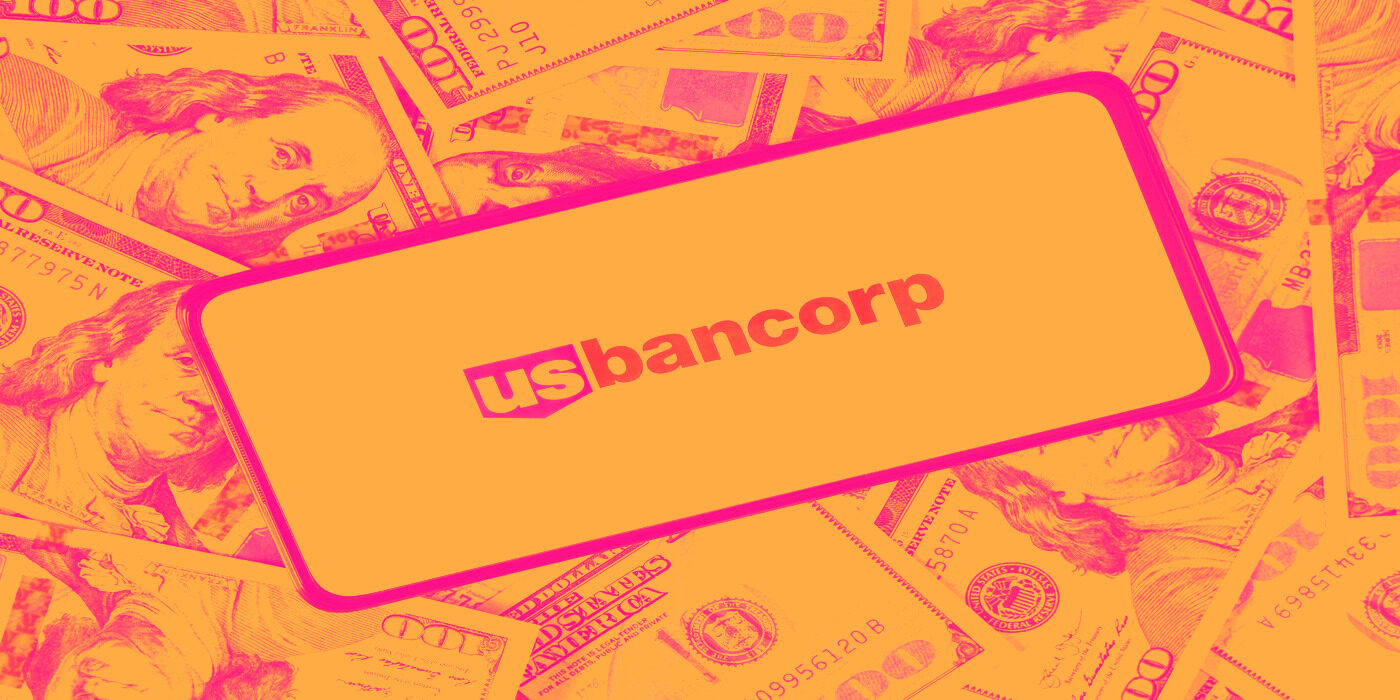
Financial services giant U.S. Bancorp (NYSE:USB) beat Wall Street’s revenue expectations in Q3 CY2025, with sales up 7.3% year on year to $7.33 billion. Its GAAP profit of $1.22 per share was 8.4% above analysts’ consensus estimates.
Is now the time to buy U.S. Bancorp? Find out by accessing our full research report, it’s free for active Edge members.
U.S. Bancorp (USB) Q3 CY2025 Highlights:
- Net Interest Income: $4.25 billion vs analyst estimates of $4.16 billion (2.8% year-on-year growth, 2.1% beat)
- Net Interest Margin: 2.8% vs analyst estimates of 2.7% (5.5 basis point beat)
- Revenue: $7.33 billion vs analyst estimates of $7.15 billion (7.3% year-on-year growth, 2.5% beat)
- Efficiency Ratio: 57.2% vs analyst estimates of 58.2% (96.4 basis point beat)
- EPS (GAAP): $1.22 vs analyst estimates of $1.13 (8.4% beat)
- Tangible Book Value per Share: $27.84 vs analyst estimates of $27.35 (16.9% year-on-year growth, 1.8% beat)
- Market Capitalization: $72.29 billion
Company Overview
With roots dating back to 1863 and a presence across 26 states primarily in the Midwest and West, U.S. Bancorp (NYSE:USB) is one of America's largest banks providing lending, deposit services, wealth management, payment processing, and merchant services to individuals and businesses.
Sales Growth
From lending activities to service fees, most banks build their revenue model around two income sources. Interest rate spreads between loans and deposits create the first stream, with the second coming from charges on everything from basic bank accounts to complex investment banking transactions. Over the last five years, U.S. Bancorp grew its revenue at a mediocre 4% compounded annual growth rate. This was below our standard for the banking sector and is a tough starting point for our analysis.
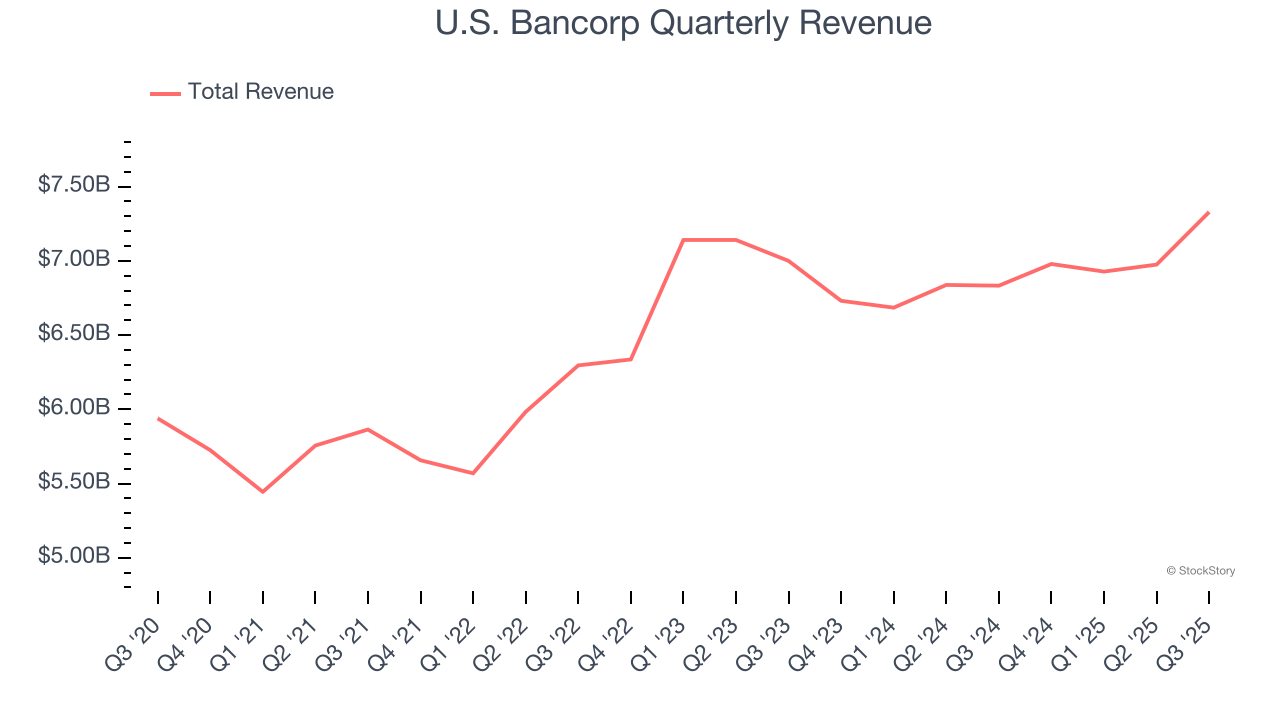
Long-term growth is the most important, but within financials, a half-decade historical view may miss recent interest rate changes and market returns. U.S. Bancorp’s recent performance shows its demand has slowed as its annualized revenue growth of 1.1% over the last two years was below its five-year trend. 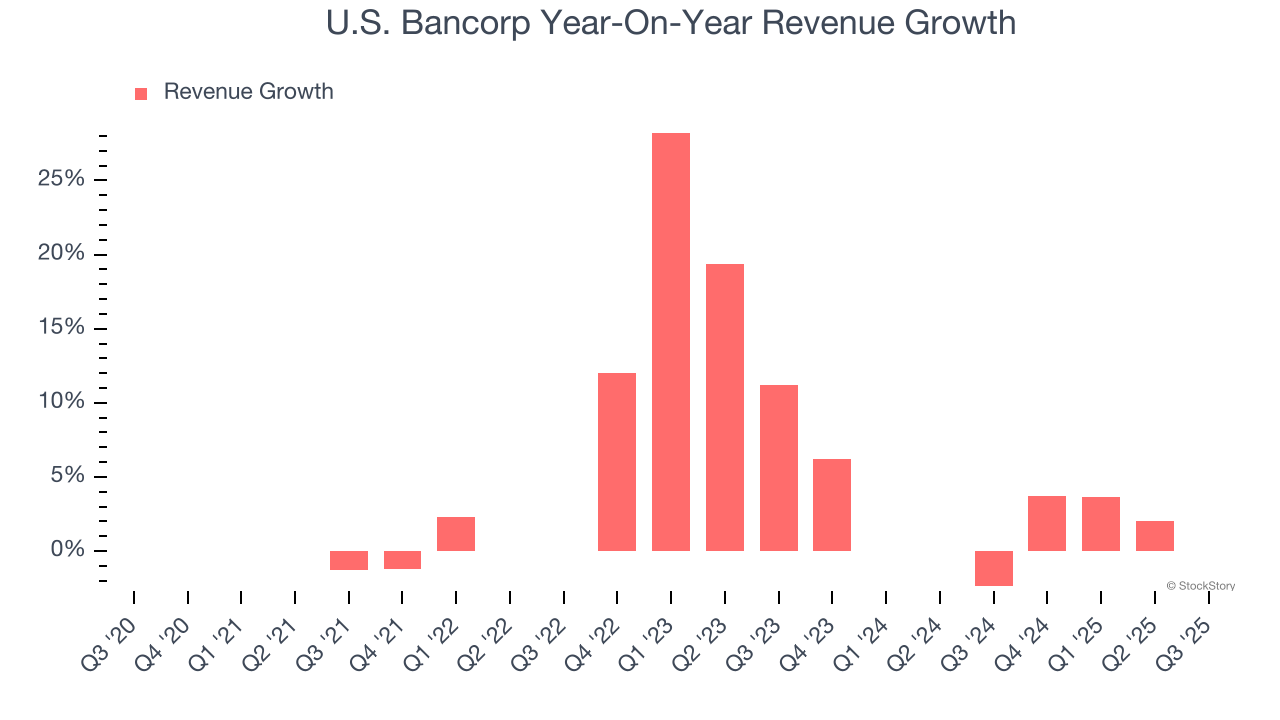 Note: Quarters not shown were determined to be outliers, impacted by outsized investment gains/losses that are not indicative of the recurring fundamentals of the business.
Note: Quarters not shown were determined to be outliers, impacted by outsized investment gains/losses that are not indicative of the recurring fundamentals of the business.
This quarter, U.S. Bancorp reported year-on-year revenue growth of 7.3%, and its $7.33 billion of revenue exceeded Wall Street’s estimates by 2.5%.
Net interest income made up 59% of the company’s total revenue during the last five years, meaning U.S. Bancorp’s growth drivers strike a balance between lending and non-lending activities.
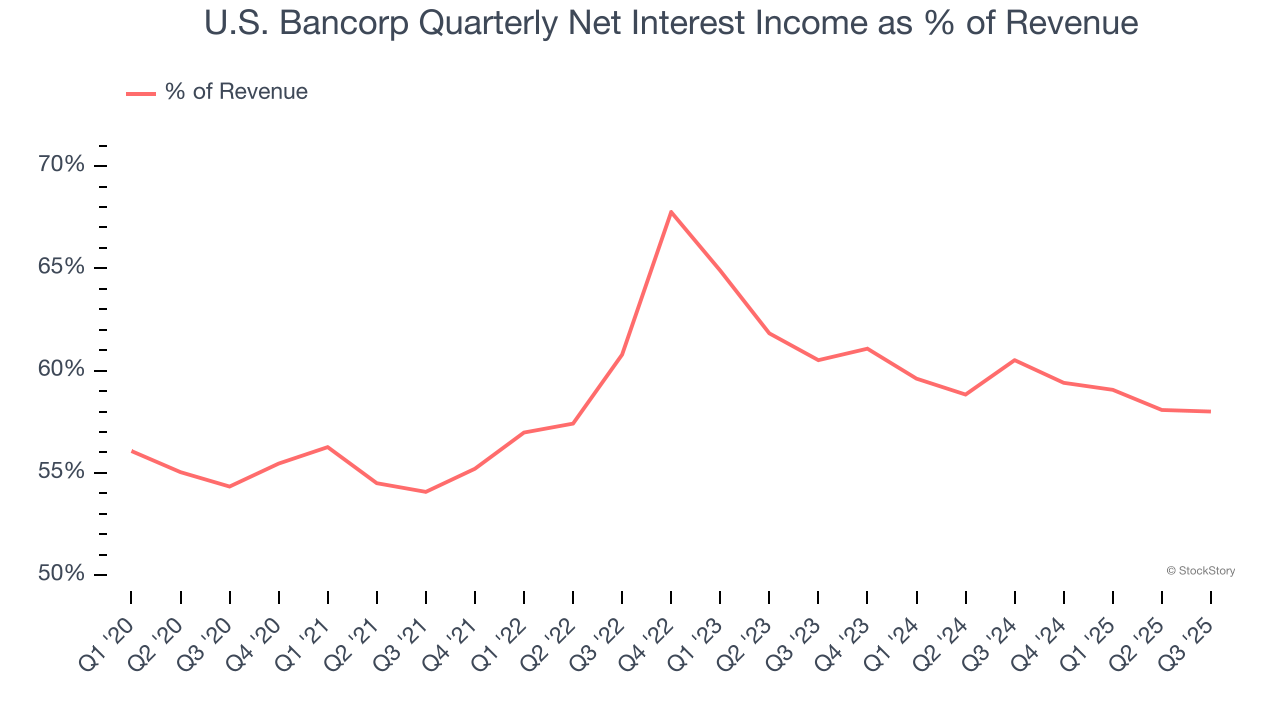
While banks generate revenue from multiple sources, investors view net interest income as the cornerstone - its predictable, recurring characteristics stand in sharp contrast to the volatility of non-interest income.
Unless you’ve been living under a rock, it should be obvious by now that generative AI is going to have a huge impact on how large corporations do business. While Nvidia and AMD are trading close to all-time highs, we prefer a lesser-known (but still profitable) stock benefiting from the rise of AI. Click here to access our free report one of our favorites growth stories.
Tangible Book Value Per Share (TBVPS)
Banks profit by intermediating between depositors and borrowers, making them fundamentally balance sheet-driven enterprises. Market participants emphasize balance sheet quality and sustained book value growth when evaluating these institutions.
This is why we consider tangible book value per share (TBVPS) the most important metric to track for banks. TBVPS represents the real, liquid net worth per share of a bank, excluding intangible assets that have debatable value upon liquidation. Other (and more commonly known) per-share metrics like EPS can sometimes be murky due to M&A or accounting rules allowing for loan losses to be spread out.
U.S. Bancorp’s TBVPS grew at a tepid 3.1% annual clip over the last five years. However, TBVPS growth has accelerated recently, growing by 18.3% annually over the last two years from $19.90 to $27.84 per share.
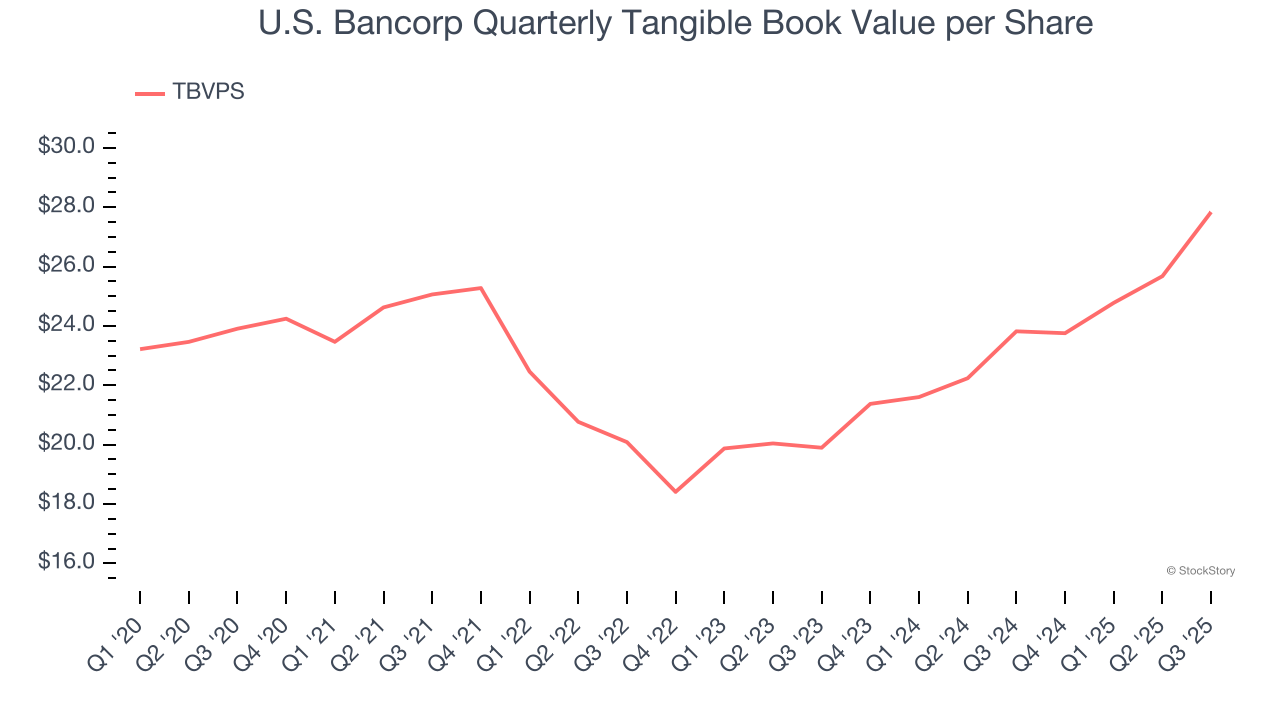
Over the next 12 months, Consensus estimates call for U.S. Bancorp’s TBVPS to grow by 9.2% to $30.40, decent growth rate.
Key Takeaways from U.S. Bancorp’s Q3 Results
It was encouraging to see U.S. Bancorp beat analysts’ revenue expectations this quarter. We were also happy its net interest income outperformed Wall Street’s estimates. Overall, we think this was a decent quarter with some key metrics above expectations. The stock traded up 3.6% to $48.14 immediately after reporting.
U.S. Bancorp may have had a good quarter, but does that mean you should invest right now? If you’re making that decision, you should consider the bigger picture of valuation, business qualities, as well as the latest earnings. We cover that in our actionable full research report which you can read here, it’s free for active Edge members.
